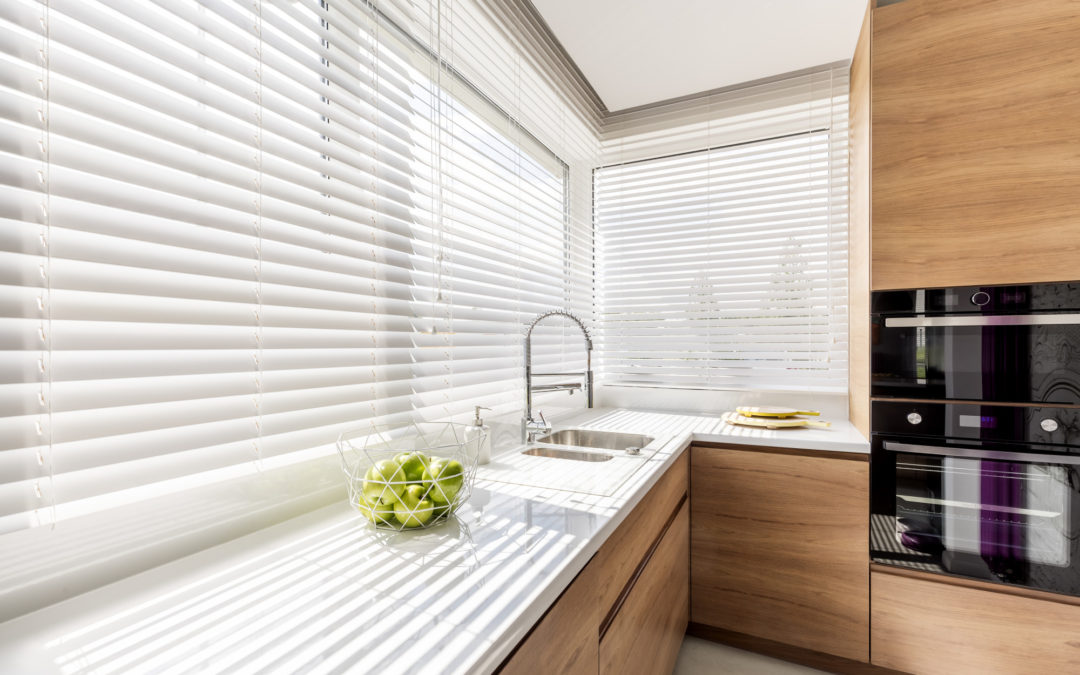Window treatments can go a long way toward keeping more money in your wallet. If your windows aren’t properly insulated, then you might as well throw your money away. This is essentially what you’re doing, anyway.
We’re not being facetious. According to the Department of Energy, your windows are responsible for about a third of your heating and cooling energy use. It’s a real money pit you can finally fill with an energy-efficient window treatment.
How can a window treatment improve your home’s energy efficiency?
If a third of the money you spend on cooling or heating literally goes out the window, how can window coverings help you? By keeping heat outside in the summer and inside in the winter.
Of course, different window treatments will have different levels of energy efficiency. Some of them will make your energy bills considerably lower, while others will barely make a dent.
In Alabama, the summer heat is a much bigger problem than winter cold. It’s important to have something that lowers solar heat gain in the summer.
Most window treatments do this by blocking or reflecting direct sunlight and preventing it from entering your room. And some do this better than others.
We’ll present you with all the different options so you can choose the one that best fits your needs and budget.
What should you look for in a window treatment?
If you’re looking at window coverings with energy efficiency in mind, ideally you want something that will make a dent in your power bill.
Aside from that, it’s good to have a window treatment that allows you a degree of light control. Direct sunlight is one of the main culprits of turning your living room into a sauna.
Style, of course, is also important. You want something that enhances your home and fits your interior design. Window coverings aren’t a mere utilitarian tool.
You may also be looking for comfort. In that case, it’s best to look at solutions that can be motorized (such as blinds and shades). Some smart systems can even operate on their own (for example, shutting the blinds during the day even if you’re not home).
Finally, longevity should be an important factor. You don’t want to shop for window coverings every year. Some energy-efficient window coverings are naturally much more durable than others. You should also make sure they come with a warranty.
With all this in mind, let’s see the most effective ways to save energy by installing energy-efficient window coverings.
Interior Shutters
Plantation shutters are one of the staples of Southern living for a reason. They are, by far, the most energy-efficient window covering you can install in your home.
Interior shutters, as the name suggests, are an inside mount with excellent insulating properties. They have louvers in different sizes ( 2 ½”, 3 ½”, 4 ½” and even 5 ½” louvers). The size of the louvers usually corresponds with the size of the windows.
Because you can open or close the louvers as much as you want, plantation shutters give you an excellent level of control and flexibility.
When they’re closed, interior shutters provide excellent temperature insulation. They’re amazing at keeping heat outside in the summer. In fact, this is your best bet if you’re looking for energy efficiency, combined with an excellent timeless style.
And it’s important the style is timeless because you can use your interior shutters for decades if properly maintained. This is by far the longest-term window treatment investment you can make.
Cellular shades
Cellular (or honeycomb) shades take their name from their honeycomb-shaped design. They’re one of the most popular types of shades because of their versatility and energy efficiency.
There are small pockets of air inside the cells that provide excellent insulation. The ones with a double-cell are even more effective. Furthermore, there’s also the option of a white backing, which reflects more sunlight.
Cellular shades have a higher R-value than many other window coverings. The R-value is used to measure the resistance to heat flow. A higher value means you’ll lose less heat in the winter and less heat will enter in the summer.
They can be motorized and automated for extra convenience.
Solar shades
Solar shades are another popular type of light filtering window treatment. They’re designed to reduce glare by filtering the amount of natural light coming into the room without obstructing the view. In other words, they’re not the best solution if you’re looking for privacy.
While privacy is a tradeoff, the benefit of solar shades is that they don’t prevent you from seeing outside. They still block harmful UV rays and keep the worst of the solar heat outside by blocking a part of the solar radiation from coming in.
You can choose the openness factor or how transparent you want your shades to be. Lighter ones give more visibility to the outside, but they also let in more natural lighting. Darker ones let in less sunlight, but they also “darken” your view. It’s best to view different samples before you choose the openness factor that works for you.
Roman shades
Roman shades are a timeless classic that never goes out of style. Many people love the hobbled or “waterfall” look, as well as the versatility of the design.
A Roman shade can fit almost any interior design, making them the perfect solution to tie a room together. They’re often made of an opaque fabric, which means they’re excellent at blocking sunlight, ensuring both room darkening and energy savings. They can also be lined to offer more light control and insulating options.
There are better options out there if you’re looking exclusively for energy efficiency, but this is definitely the right choice if you want to add a dash of luxury to your window treatment.
Louvered Blinds
Blinds are another popular option for window treatments. They don’t help as much with heat loss, but they can significantly reduce heat gain in the summer by reflecting the sunlight. Unlike a shade, the slats give you flexibility in controlling the amount of heat and glare coming into the house.
If you’re looking for the most energy-efficient blinds, choose white or light-colored ones. These do a better job of reflecting sunlight and reducing solar gain and cooling costs.
Horizontal blinds are better at allowing indirect sunlight while still lowering the heat. If you have a light-colored ceiling, you can even point the slats upwards. This allows the sunlight to reflect off your ceiling, allowing you to maximize natural light without dealing with the hot air.
Drapes
Unlike other window treatments, drapes are simple, but can also help reduce your energy costs.
The best choice is a medium-colored fabric, with a white backing. Using room darkening fabrics will allow you to keep sunlight out. Keep in mind they offer a relatively small insulating layer, though. This means they’re not that great when it comes to energy performance.
If you get drapes, be sure to hang them as close to the existing windows as possible, and get ones long enough to extend to the windowsill or floor. This will create a tighter seal for slightly better insulation.
Motorized shades or blinds
Even the most energy-efficient window treatment can’t do its job if you don’t use it properly. And we get it – opening and closing a window covering can be a bit of a hassle sometimes, especially when you have other things to do.
That’s why you can optimize your window coverings by motorizing and automating them. This would allow you to operate them with the press of a button without getting up and walking to the window every time.
Some models can even be integrated with home management systems and virtual assistants. You’ll then be able to operate your chosen window treatment using voice commands and you’ll be able to create settings and profiles, ensuring appropriate times when your window coverings are up and down.
Integrating your window coverings with these smart systems can bring the energy efficiency of your home to the next level. Not to mention the level of comfort.
We can even install a solar shade on the outside of your window to stop heat and light before it even gets to your window. This option can be motorized for even better convenience. Just know that it will affect the amount of light in your room and your view, but also the temperature.
Energy-efficient window treatments suited for sliding glass doors
There’s not much point in installing energy-efficient window treatments on your windows if there’s a huge sliding-glass door where heat can still enter. Lucky for you, you have excellent covering options for your glass door, as well.
Vertical cellular shades
You can bring the energy efficiency of your window treatment to your glass door with vertical cellular shades. They’re just as easy to open and close as the horizontal version.
When shopping around for a sliding glass door treatment, you need to be prepared for the price tag. Since we’re talking about a larger covering, the price tag will also reflect the surface area. But the investment is worth it considering how much money it will save you in the long run.
Vertical blinds
Vertical blinds are an excellent cost-effective solution for a sliding-glass door. They offer you the same versatility as their horizontal counterparts and they make an even bigger difference when installed on a sliding door.
Vertical blinds can be easily automated so you can control them through your smartphone, virtual assistant, or simply remote control.
Which is the best energy-efficient window treatment for you?
The answer will depend on the specifics of your home, your interior design choices, and of course – your budget. We can’t give you a definitive answer without knowing all the facts.
What we can do is help you if you contact us. Give us a call and we’d be happy to talk the solutions over with you and give you more information.


Recent Comments